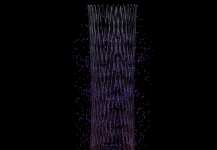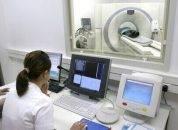This was a prospective, multicenter, randomized study including 130 patients with instent restenosis treated with sirolimus coated balloons (DCB S) and 128 treated with paclitaxel coated balloons (DCB P). Primary end point was late lumen loss (LLL) at 12 months. There were no significant differences between the groups. Mean patient age was 63, 75% were…
TCT 2023 | T-PASS TRIAL, ASA and Ticagrelor in Acute Coronary Syndrome
This is a multicenter randomized study including 2,850 patients with acute coronary syndrome. Patients were randomized to: dual antiplatelet therapy (DAPT) with ASA and ticagrelor during one month (1,426 patients), followed by ticagrelor monotherapy for 12 months, while the other group received DAPT with ASA and ticagrelor during 12 months (1,424 patients). This study was…
TCT 2023 | SWEDEHEART, Evolution at 5 Years
This register included 42,887 patients receiving FFR or iFR to assess moderate lesions, and 80% of them underwent FFR. Population characteristics were similar, except that the iFR group had more women, with more diabetes, MI, stroke and chronic obstructive pulmonary disease (COPD). Primary end point was a composite of all cause death, MI and unplanned…
Ultrathin Stents Shown Safe and Effective in Real World Patients
Ultrathin drug eluting stents (60 µm) had been shown beneficial vs. thin-strut stents in terms of target lesion failure (TLF) at 2, 3 and 5 years in randomized studies, but they had not been yet assessed in “real world” patients. The BIOFLOW VII is a prospective, multicenter study including 556 “real world”patients with a total…
Complex Coronary Angioplasty in Elderly Patients: Problem or Solution?
Cardiovascular disease is the leading cause of death in elderly adults (individuals aged 75 years or older). In turn, coronary heart disease is one of the main causes of morbidity in this population. In addition to anatomical complexities, there are other factors that may complicate its management, such as polypharmacy, frailty, and procedure-related risks. All of…
Should We Use Ultrasound to Guide Transfemoral Access Routinely?
Currently, transfemoral access (TFA) is used in large-caliber procedures and when transradial access is not successful. The use of ultrasound (US) to guide access has emerged as a technique that allows for precise cannulation, avoiding accesses above and below the inguinal ligament. However, evidence regarding the effectiveness of this tool has shown variable results. Two…
Cardiac Angiography: Necessary for CABG Patient Diagnosis?
Cardiac revascularization surgery (CABG) has shown positive results at long term in CAD patients with multivessel or left main disease. However, we are well aware that, after CABG, there might be native disease progression over time. Also, at followup, we often see high incidence of venous graft failure. According to registry data, approximately 1 in…
Left Main Coronary Artery PCI: In What Scenario Could We Not Use IVUS?
Lesions in the left main coronary artery (LMCA) continue to pose a significant challenge. The use of coronary imaging before percutaneous coronary implantation (PCI) has proven useful in analyzing the lesion, identifying the presence and location of calcification, and determining lesion length in the LMCA, the left anterior descending artery, and the circumflex artery. Various…
Treatment and Gender-Based Outcomes for Coronary Bifurcation Stent Placement: Report from the e-ULTIMASTER Registry
Approximately 20% of all percutaneous coronary interventions (PCI) are performed on bifurcation lesions, which continue to pose a challenge in terms of strategy: how many stents to use, what is the most suitable strategy, and when to transition from a single stent to two during the procedure. Additionally, the use of two stents in these…
BIFURCAT Registry: 1 or 2 Stents? Treatment of Side Branch (Medina 0.0.1) Lesions According to Real-World Data
Coronary bifurcation lesions have been a subject to debate, with different approaches by various medical teams. These lesions often carry a higher risk of ischemic events compared with lesions at non-bifurcated sites. The main strategy, supported by medical society recommendations and clinical guidelines, involves using provisional stenting with one stent to minimize the number of…
Use of Drug-Coated Balloons in De Novo Lesions in Large Coronary Vessels
Drug-coated balloon (DCB) angioplasty is emerging as a novel treatment for coronary artery disease. Studies evaluating this strategy have demonstrated clinically non-inferior outcomes compared with those of drug-eluting stent (DES) implantation in patients with in-stent restenosis and de novo disease in small vessels. However, evidence for the use of DCBs in large coronary vessels is…









